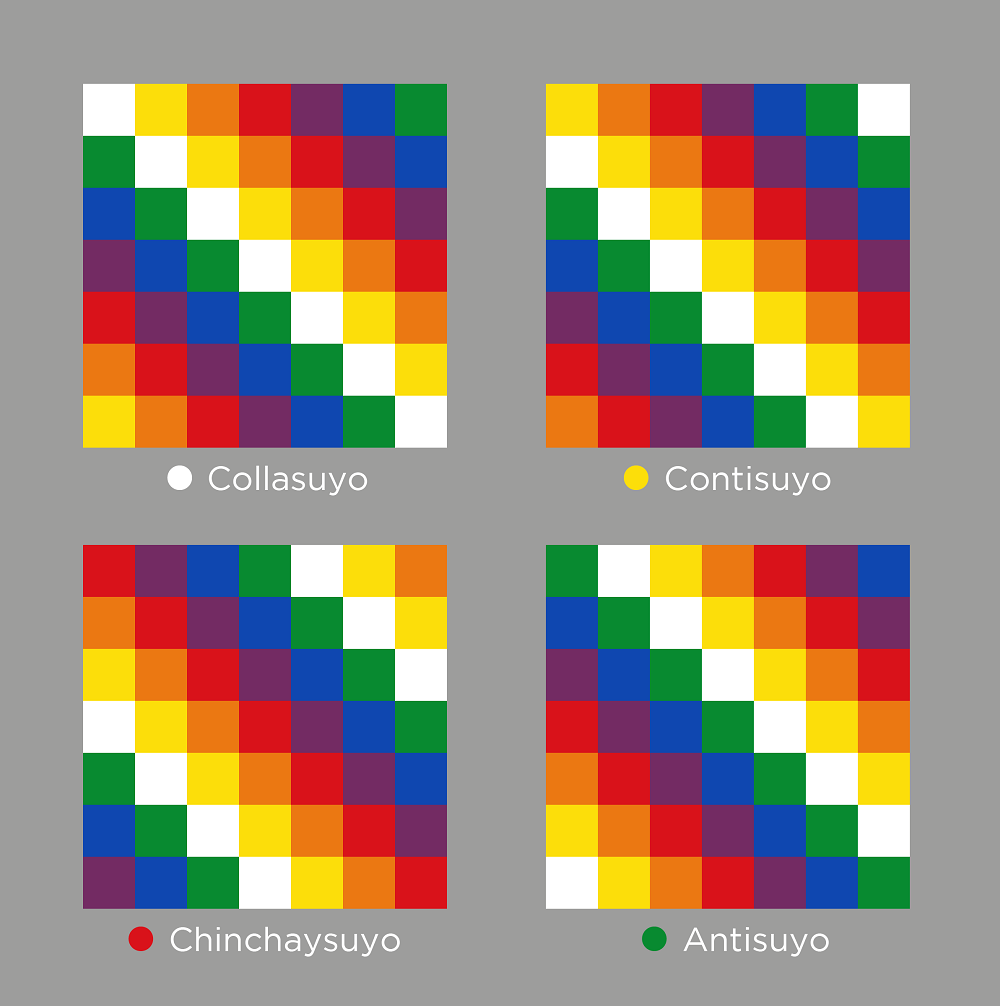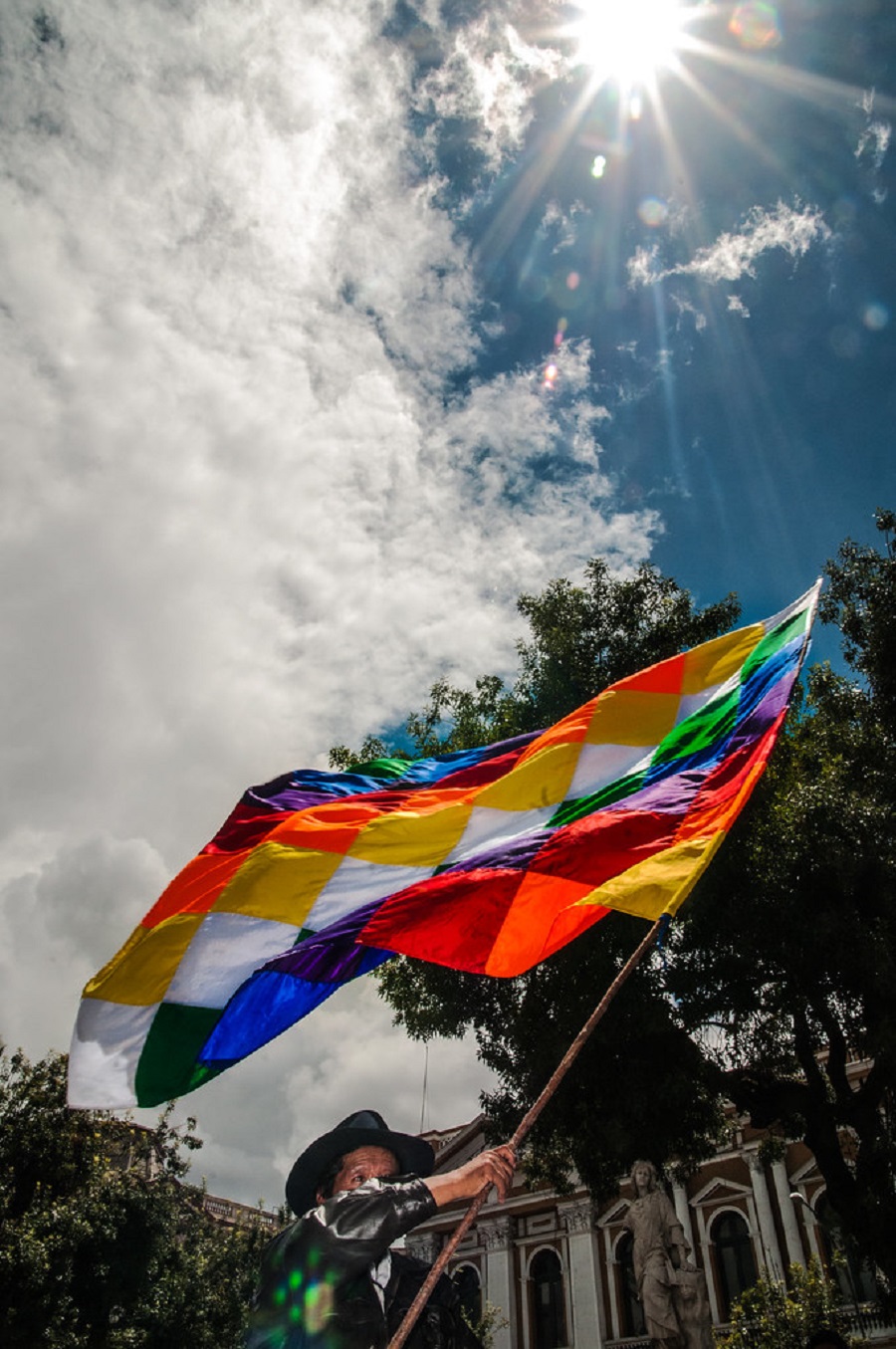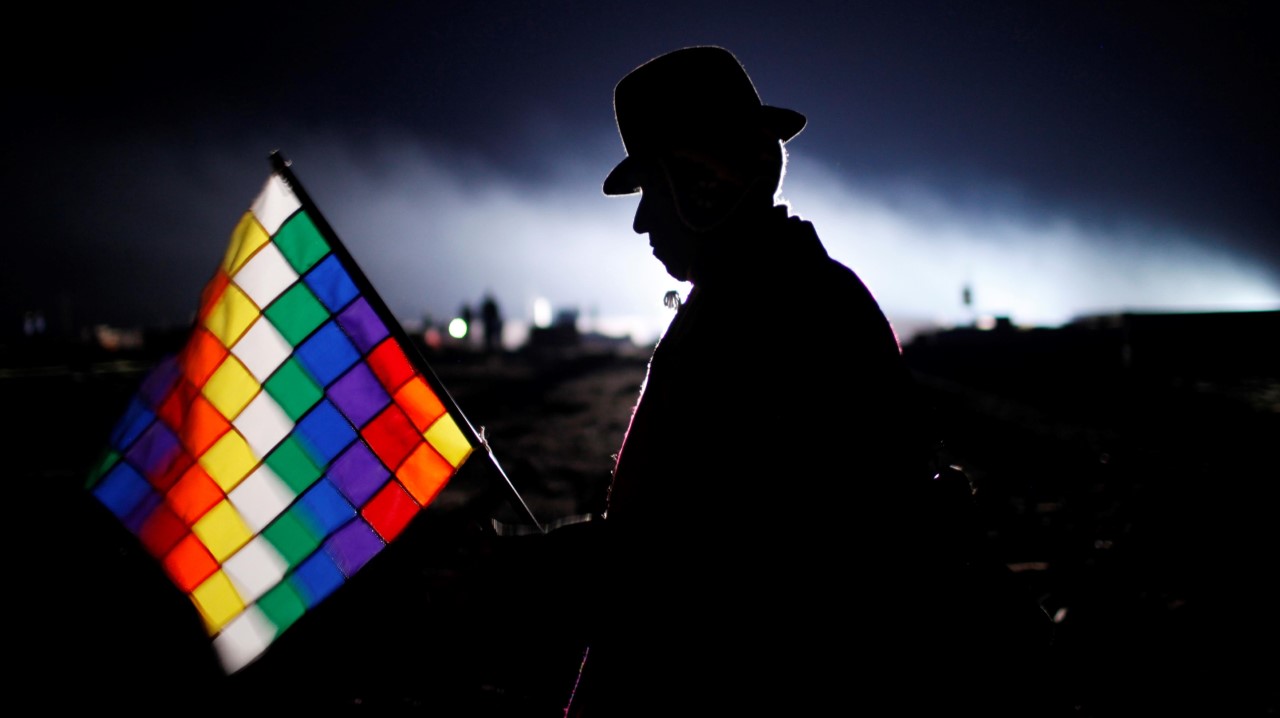The Aymaras are an indigenous society that are established in various Andean regions of South America, something very particular about them is their insignia symbolized in the Wiphala flag. Therefore, do not miss the opportunity to learn through this article, everything about the Aymara flag and what surrounds it.

What is the Aymara Wiphala flag and what does it represent?
Wiphala is a flag and the meaning of this is a whole compound of conceptions, what if you are very sure is that this badge represents the beliefs about the origin of life and the world of the Andean ethnic groups of South America, established in Bolivia and Peru, but also part of these towns can be located in Chile, Argentina and Ecuador.
The design of this flag is made up of 49 squares (7×7), which are distributed with 7 different colors, some refer to the fact that it represents the rainbow that forms when the sun's rays cross the rain; It must be emphasized that the Sun was the most important representation of the Andean peoples of South America.
This flag also embodies two fundamental values of the native peoples of the Andean region: the principle of universal functioning (Pachakama) and Mother Earth (Pachamama), which constitutes the place, the time, the power and the world, that is why the meaning of the Wiphala is a whole. Likewise, this badge is associated with the values of support, brotherhood and society.
This flag has different variations, however, the best known of this is the one with the diagonal white checkered stripe in the middle of it, the insignia of the native peoples and a sign of resistance. However, it should be mentioned that these towns, as mentioned above, have 4 variants of this, where the colored stripes are distributed in a very different position. Thus, as each region has its own Wiphala with a different colored stripe in the middle of it, these are:
- antisuyo: It has the green stripe.
- Cuntisuyo: It has the yellow stripe.
- collasuyo: It has the stripe in White.
- chinchaysuyo: has the stripe in Red color.
Origin and Use of the Aymara Flag
The historical origin of the wiphala is totally unknown. However, it is known that the essential elements of the wipala design existed since pre-Columbian times, in the native peoples linked to the Incas or the indigenous people who inhabited the Andean areas of South America.
This ancient society had no knowledge of what a flag was, however, they came to use a kind of emblems or insignia, and it was not until the arrival of the Spanish to these lands that what is known as a flag was introduced.
It is important to highlight that the design of the Wiphala could be observed in indigenous art and in the art of the colonies, which show the presence in textiles and other instruments in which the design of the wiphala is displayed. Among these found objects, we can mention the following:
- A banner-shaped object in an 800-year-old tomb in the Chanqay region, located on the central coast of Peru.
- A colored wiphala on a stone, located in the area called Wantirani, in the Qppakati Manko Kapajk region in La Paz – Bolivia.
- A Wiphala next to the fabrics in Koroma dating from pre-colonial times, in the Quijarro region in Potosí – Bolivia.
Despite this pattern having been used in antiquity and still preserved by the Aymara people, it was not until 1970 that the use of this flag began to spread in most of the Andean peoples and the world. This was due to the mobilizations and protests of the indigenous peasant unions, which took place in Bolivia during this period.
Thus, during the year 1987, a group of researchers began the task of investigating and exploring the symbols of the cultures of Tahuantinsuyo, and the records that showed the presence and development of the wiphala; It is through this research that the different variations of this flag specified above are known.
Additionally, it can be mentioned that the etymology of the expression Wiphala is generated from Wiphay (which is the voice of victory) and laphaqi (understood as the flow of a malleable element in the wind), two expressions of the Aymara dialect.
The Aymara or wiphala flag, according to Andean habits, must be raised in all social and cultural events of these communities such as:
- The meetings of members of the Ayllu community.
- In marriages, births, Andean baptisms, funerals, among others.
Likewise, this is used in the majestic festivals in the ceremonial and civic acts of the town, such as the following:
- Brand acts.
- Wallunk'a games in recreational and competition games Atipasina.
- Historical dates such as the cattle ceremony.
- Transmission of command of the authorities in each period.
It is also used in dances and dances, such as in the Anatá or Pujllay festivities. Thus, as at the end of a construction, either of a house or any building founded in the town.
Colors of the Aymara flag and their meaning
Next, the meaning of the colors of the Aymara flag is described, which as a whole symbolizes equity and peace in these towns, these are:
- RED: is the world and also symbolizes the word of the Andean individual, intellectual progress and cosmology.
- Orange: encompasses what is the community and culture, therefore it represents the manifestation of culture, conservation and production of the human being; it is health and medicine, training and education, the cultural practice of young entrepreneurs.
- Yellow: it is the energy and power, manifestation of the moral foundations, it is the wisdom of Pachakama and Pachamama: duality, statutes and laws, the collective expertise of the fraternity and human support.
- Blanco: it is time and logic, it is the manifestation of progress and the constant metamorphosis of society on the Andes, the evolution of science and technology, the artistic, the intellectual and artisan work that creates correspondence and harmony within the organization Social.
- Verde: represents the Andean economy and production, the natural wealth of the surface and the subsoil, the flora and fauna that are a gift.
- BLUE: the infinite universe, is the manifestation of stellar groups and natural phenomena.
- Violeta: Andean politics and current of thought are the manifestation of the harmonious communal domain of the Andes; the tool of the State as a superior entity, the social, cultural and economic institutions, the direction and management of the people and the country.
The sides of the flag and the internal squares preserve an exact symmetry, alluding to equity and unanimity in the multiplicity of Andean peoples. Additionally, there are different ways to understand the flag; Thus, it has not only been used as a badge but also as a celestial calendar. In addition, the internal squares of Wiphala would represent the 5 fundamentals of conduct of the Andean community:
- Don't be lazy
- Tell no lies
- Do not steal
- Do not kill
- have no vices
Wiphala today
There are many countries where this Aymara flag can be displayed, such as in all of Bolivia and Peru, in the northern provinces of Argentina and Chile, to the west of Paraguay and parts of southern Ecuador.
In Bolivia, specifically in In 2008, the Bolivian government under the administration of Evo Morales constitutionally recognized the Aymara flag as a symbol of this country, which is why it can be seen even in public, educational and other institutions. This usually accompanies the tricolor flag of this Andean country hoisted to the left of it.
In Chile, in the municipality of Alto Hospicio, declared a pluricultural municipality, it was decided by union to recognize the Wiphala as a badge of the municipality, which must be hoisted with the national flag and the municipal flag; This recognition brought with it the founding of the body for indigenous issues.
In Argentina, this flag is generally known as the "flag of the indigenous nations" and certain societies (distanced from being linked to the Aymara culture), have accepted it as their insignia.
In many places, the Wiphala is used as a symbol of resistance and protest in the struggle for the rights of Native American peoples.
If you found this article about the Aymara Flag interesting, we invite you to enjoy these others:


